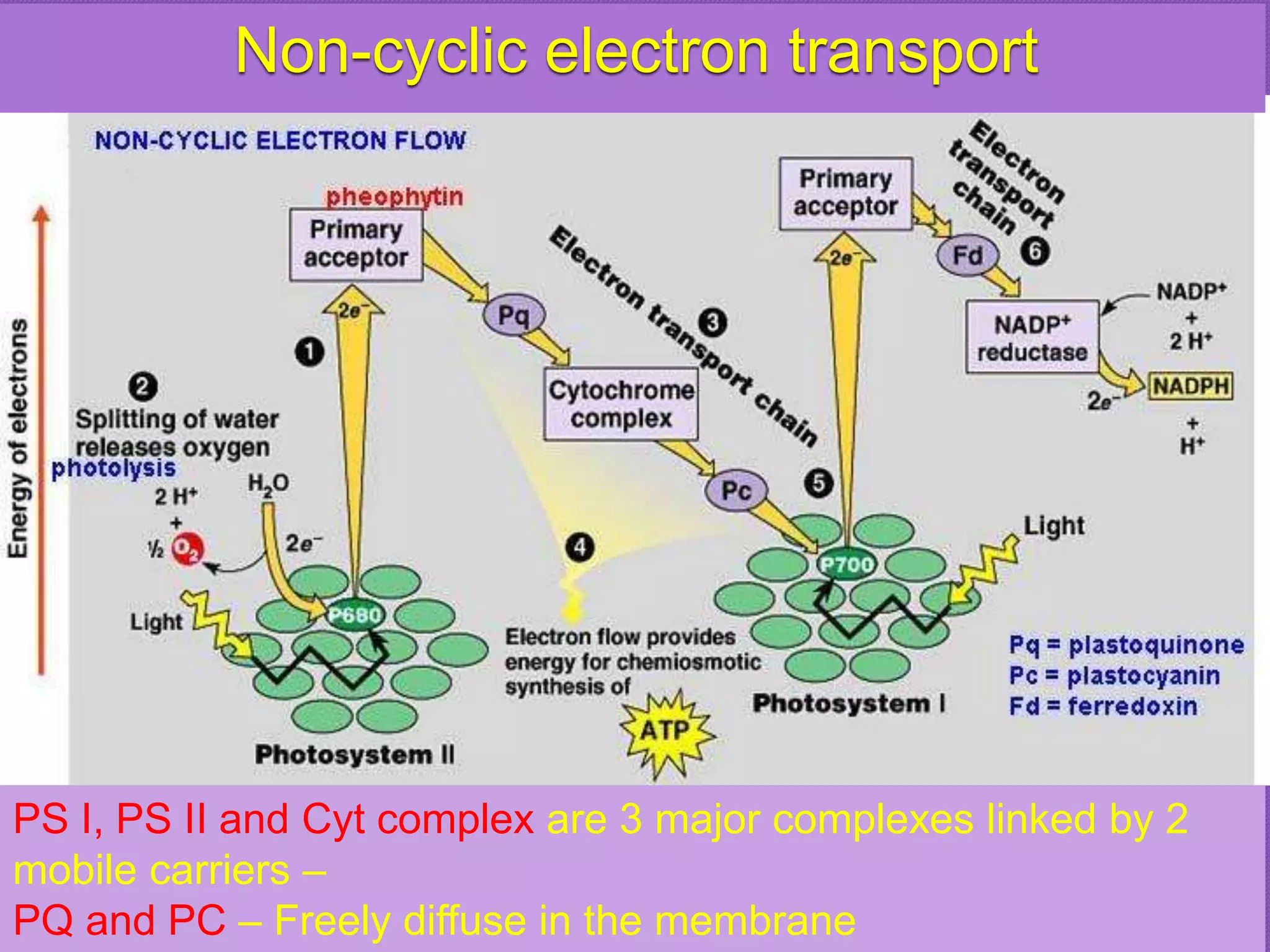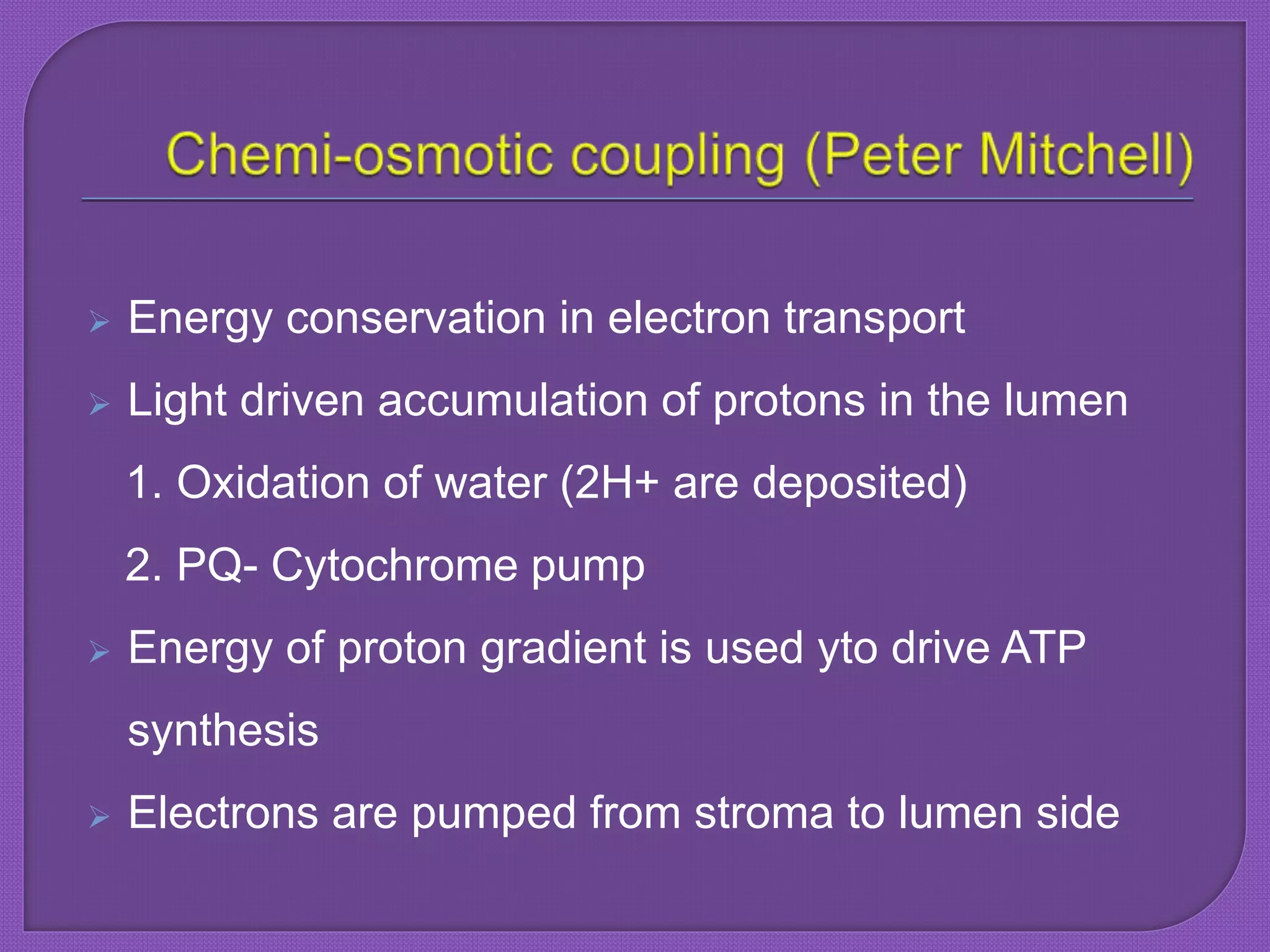This document summarizes key aspects of photosynthesis. It describes that photosynthesis occurs in plants, algae, and photosynthetic bacteria. Light energy is captured and used to fix carbon from carbon dioxide into sugars, with oxygen as a byproduct. The process takes place in chloroplasts and involves two stages - the light reactions where ATP and NADPH are produced, and the dark reactions where CO2 is fixed into sugars. Pigments like chlorophyll and accessory pigments harvest light energy which is used to power electron transport and produce chemical energy carriers.










































































